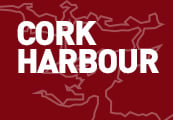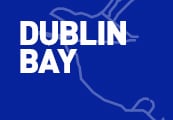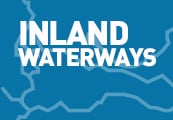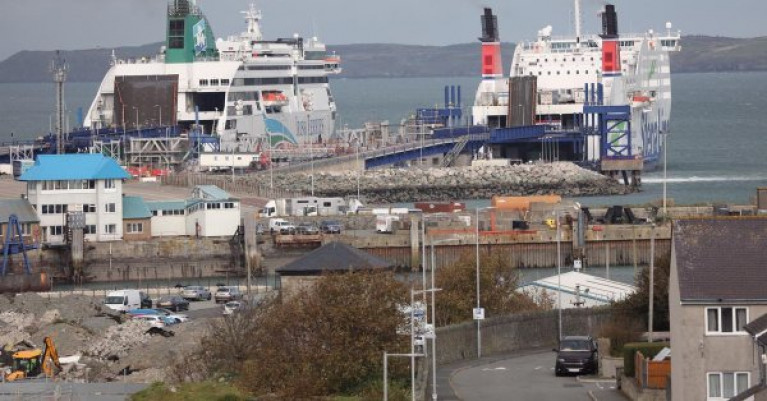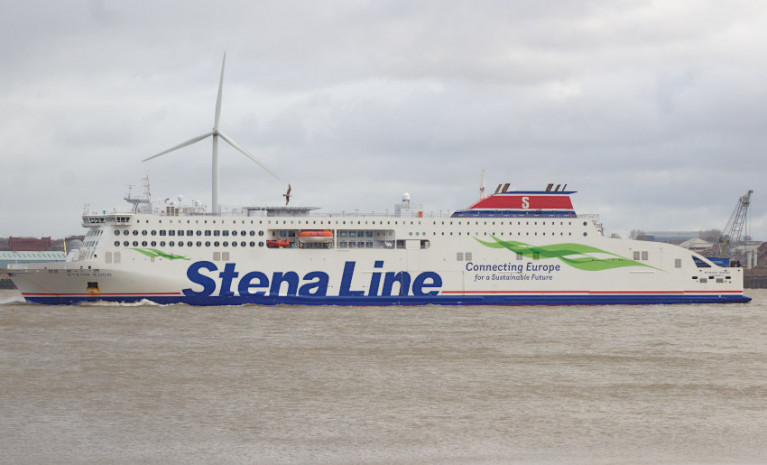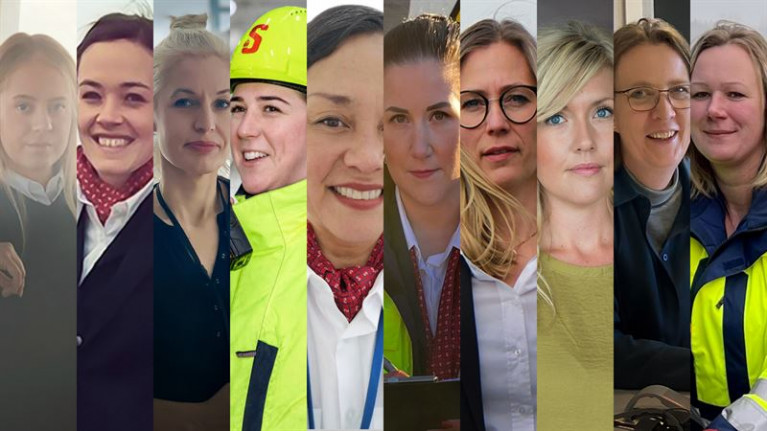Displaying items by tag: Stena Line
Pembrokeshire Ferry to Resume Rosslare Route Service Tonight after Almost Six-Week Absence
Passengers, particularly Welsh rugby fans travelling by ‘foot’ for this Saturday’s match with Ireland, in Dublin, have got good news as the Stena Line owned port of Fishguard is to see their ferry back on the run after a five-and-a-half-week disruption in service.
The south Wales-Ireland route, formerly served until last year by the popular Stena Europe as Afloat referred earlier today, (see related Stena CEO story), will reports the Western Telegraph, travel but from the Irish port of Rosslare to Fishguard at 7.30pm (19.30hrs) this evening on the first crossing in more than a month as the St. Georges Channel ferry service resumes. (At the time of writing, Afloat can confirm the Stena Europe has departed Rosslare).
Stena Europe is being used as a temporary vessel while Fishguard Port undergoes maintenance work to a linkspan berth. The work means that the Stena Nordica, which was announced a year ago as the ‘permanent’ ferry since its introduction in July last year, was operating between Fishguard and Rosslare is unable to berth in Fishguard at the moment.
The ropax ferry since January has been been put on the Dublin to Holyhead route while the work takes place, allowing also for that route’s secondary ferry, Stena Estrid to provide relief cover for the Belfast-Birkenhead E-flexer twins to go for annual overhaul dry-dockings.
The only one ferry that is able to berth at Fishguard in its current configuration is the Stena Europe, however the veteran vessel dating to 1981 had to go for repairs at Cammell Laird, Birkenhead, from where the ferry has been for the most part of these past weeks, then a stint afterwards at Liverpool Docks. Afloat had tracked the ferry relocate having crossed the Mersey with the assistance of a pair of tugs to enable berthing within the docks that would later include shifting to Canada Dock.
Now that the Stena Europe has returned to Fishguard after the long delay due to unforeseen mechanical issues, but Stena has confirmed that the ferry has taken over the route from today.
As previously reported, Stena Europe covered the Fishguard-Rosslare run for 21 years, until 13 July last year followed by a trip to A&P Falmouth that afterwards led to a short charter on the Strait of Gibraltar between Spain and Morocco.
“Stena Line can confirm that Stena Europe will enter service on the Rosslare-Fishguard route at 7.30pm on Tuesday, February 20,” said a company spokesperson. “We apologise for the delay to the resumption of this service, and we look forward to welcoming our customers onboard.”
More on the story here as the Stena Europe will also be a most welcome sight for ferry fans on both sides of the southern corridor route, though the ferry will be replaced again when Stena Nordica makes its presence with a night-sailing departing the Welsh port on St. David’s Day, 1st March.
Afloat however understands Stena Nordica is to be off-service again but on a temporary basis on the Rosslare-Cherbourg route joining the Stena Vision as the Ireland-France route's secondary ferry, ropax Stena Horizon is currently running Stena's new Dublin-Birkenhead 'freight' route but is scheduled to return to the continental service in April.
Dublin Port Company Confirms Stena Line & Seatruck Ferries for Terminal 5
Dublin Port Company (DPC) has today announced the outcome of the selection process that will see Terminal 5 in Dublin Port licensed to Stena Line and Seatruck Ferries. Stena Line will operate a new Dublin-Birkenhead (Liverpool) service while Seatruck Ferries and parent company CLDN will further develop their Dublin-UK services as part of this new shared freight terminal agreement.
In September 2023 DPC called for proposals from interested ferry lines to service west coast English or Welsh ports (excluding Dublin-Holyhead) out of Dublin following confirmation that P&O (which operated from Terminal 5 in Dublin Port) would exit the Dublin-Liverpool route by year end.
Stena Line’s new freight service between Dublin and Birkenhead (Liverpool) commences mid-February 2024, while Seatruck Ferries will move its Dublin-Heysham freight service within Dublin Port to Terminal 5 in January 2024.
DPC’s decision to award a shared licence to both Stena Line and Seatruck Ferries at Terminal 5 maximises the port’s existing infrastructure by pushing more truck and container freight through the terminal’s footprint. The move further supports DPC’s objective of adding capacity where possible, given the ongoing constraints on port lands, with Dublin Port already running close to capacity.
Barry O’Connell, CEO, Dublin Port Company, said: “It’s essential for Ireland’s economy that we have strong availability and competition on direct shipping routes between Dublin Port and the UK. We are pleased to welcome Stena Line’s new Dublin-Birkenhead route which brings choice to the market, and to continue working with Seatruck Ferries and CLDN on growing its Dublin-Heysham service.”
Stena Line’s new freight service
Stena Line’s new freight service will initially operate with one ship departing Dublin early in the morning and making the return journey from Birkenhead in the evening.
Stena Line already operates from Dublin Port to Holyhead and from Birkenhead to Belfast, and this new service will complement these existing routes. The company is currently assessing ship deployment options ahead of the mid-February start date in Dublin.
Paul Grant, Trade Director (Irish Sea), Stena Line, said: “We are very excited to re-establish this vital trade corridor with our new freight route between Dublin and Birkenhead which will further increase crossing options for our hauliers and their customers. With Stena Line now operating two routes out of both Dublin Port and Birkenhead, we are establishing key logistics hubs connecting freight flows across the Irish Sea and creating efficiencies for port users. We have invested significantly in our Birkenhead operations in recent years and as a result have seen growth on our Belfast to Liverpool service. We are confident that this new service will prove popular, offering more choice for our freight customers on both sides of the Irish Sea.”
Seatruck’s growing freight business
Seatruck Ferries and CLdN have been steadily expanding services into and out of Dublin in recent years. CLdN currently operates direct services from Rotterdam, Zeebrugge and Santander, while Seatruck Ferries operates the Heysham and Liverpool routes. As a result of the licence, Seatruck Ferries will move its Dublin-Heysham service to Terminal 5 in early 2024. All other CLdN services, including the Seatruck Ferries services to and from Liverpool, will continue to operate from Terminal 4. CLdN will also add a vessel to the Dublin-Liverpool route, providing extra sailings on Tuesdays, Wednesdays and Thursdays, bringing the total number of daily departures from three to four in each direction.
Alistair Eagles, Managing Director Seatruck Ferries, said: “We very much welcome this decision by Dublin Port. CLdN and Seatruck’s unaccompanied freight business on the Irish Sea has been growing steadily over recent years and more than 70% of all Irish Sea ferry freight now moves on an unaccompanied basis. The use of both Terminal 4 and Terminal 5 will enable us not only to further increase capacity but also to optimise the efficiency of our operations at the port. We look forward to growing our links with DPC as a stable and reliable partner and to further expanding our offer to customers.”
‘Man Overboard’ From Belfast Ferry Dies in Scotland
A man rescued near Cairnryan in western Scotland after going overboard from a ferry from Belfast Lough on Saturday evening (1 July) has died in hospital, as BelfastLive reports.
The Stena Line Superfast VIII ferry’s own rescue craft was deployed to retrieve the casualty who was subsequently winched aboard a HM Coastguard rescue helicopter and taken to Ayr Hospital.
It’s understood the casualty fell from the ferry as it was approaching Loch Ryan Port in Cairnryan around 5.30pm on Saturday.
In a statement, Police Scotland confirmed that the man was pronounced dead after arrival at Ayr Hospital.
It added: “Enquiries to establish the full circumstances of the incident remain ongoing, however there are not thought to be any suspicious circumstances. A report will be submitted to the Procurator Fiscal."
BelfastLive has more on the story HERE.
Port of Holyhead Repair Plans for Breakwater After Storm Damage & Vandalism to Go Before Councillors
In North Wales, plans for the "refurbishment and repair" of the Anglesea ferry port landmark battered by storms and damaged by vandals are set to go before planners.
Councillors in Anglesey will consider the proposals for maintenance at Holyhead's historic breakwater and port area.
A full application for the "refurbishment and repair" of the Victorian breakwater structure and the manufacture of concrete at the Salt Island (ferry terminal) site has been received. Holyhead's breakwater provides coastal protection for the port and a number of waterfront facilities in Holyhead New Harbour.
Salt Island is a natural shelter for the town's Old Harbour from the Irish Sea and part of the Port of Holyhead. The latest maintenance plans include the formation of a "temporary concrete batching plant" for the "fabrication, curing and storage of concrete armour units" at Salt Island, and has been received for consideration by Anglesey County Council.
Further coverage NorthWales reports on the port which is operated by Stena Line Ports Ltd.
Stena Line & Associated British Ports Sign £100M Deal for New Ferry Terminal at the Port of Immingham
Stena Line and Associated British Ports (ABP) have entered into an agreement to jointly develop a new freight terminal at the Port of Immingham in the Humber region. The £100M agreement will see the Swedish ferry company operate the new terminal for the next 50 years. It is a major long-term commitment and boost for the region, where freight on routes to and from the EU has been booming since Brexit.
Stena Line is one of the largest ferry operators in the world with 18 routes, and 37 vessels, operating between 13 countries across Northern Europe. It currently runs four daily freight services from the Humber to The Netherlands. These important services are now in greater demand than ever before and are expected to increase further. 2021 saw their North Sea routes moving record levels of freight, this included a 28% year-on-year increase in unaccompanied freight.
At the start of the year Stena Line relocated its Rotterdam freight service to the Port of Immingham, the largest port in the UK by tonnage, which is owned by ABP. The move has allowed the company to become the provider of both the terminal and shipping operations, which has resulted in improved benefits and expanded services to its significant freight customers in the region.
With freight levels continuing to grow for the company, Stena Line needs to add capacity and expand its operations at Immingham. It requires a long-term solution that has access to the main Humber Estuary. This would allow for quicker sailing times and the option to use larger vessels to cater for increased freight demand from exporters and importers from across the region and the rest of the UK.
The proposals outline the relocation of Stena Line’s current Immingham freight operations to a new site, adjacent to Immingham Outer Harbour, where ABP will develop a new purpose-built terminal facility. The proposals will allow the company to further expand its services by providing increased freight capacity for its customers. It is a significant infrastructure development for the region.
Niclas Martensson, Chief Executive Officer of Stena Line said: “we are very pleased to announce that we will now take the next steps in the strategic vision for our routes between the UK and Continental Europe. Our freight levels are at record levels and are continuing to increase, so we want to build on this success and provide additional services to our most important business needs, those of our customers, with the development of a brand new terminal and berths at the Port of Immingham.” He added: “Stena Line is pledging a significant long-term commitment that will bring a substantial boost
to the region’s economy in terms of jobs and revenue. We look forward to working with Associated British Ports to develop this exciting project.”
Simon Bird, Humber Director, Associated British Ports, said “We’re delighted to welcome this new deal with Stena as it underlines the fact that ABP in the Humber is continuing to go from strength to strength. Stena will be joining a growing family of commercial partners who are choosing to use ABP’s ports in the Humber which have fantastic facilities and connections for traders across Europe and beyond. Our track record in recent years of investing in new infrastructure is making the Humber the place to be for trading links between the Midlands and North of England, and the rest of the World.”
ABP intends to submit an application for a Development Consent Order to the Secretary of State for Transport in early summer with a view to the new terminal facilities being operational in 2025.
A multi-agency response was launched last night (Monday 12 July) to battle a fire on board a Stena Line ferry in Belfast Lough.
As BBC News reports, the fire broke out in the engine room of the Superfast VIII around 9pm as the ferry was sailing to Northern Ireland from Cairnryan in Scotland.
All passengers were safely disembarked amid a “relatively calm” atmosphere as RNLI lifeboat crews from Bangor, Donaghadee and Larne dealt with what’s being described as “a small fire”.
Travel Weekly has an update on the story HERE.
Stena Line Aim to Reduce Emissions by 5% Using AI
During the last month, the AI assistant Stena Fuel Pilot has been successfully introduced on two more Stena Line vessels, Stena Flavia and Mecklenburg-Vorpommern. In total, 7 Stena Line vessels now operate with AI assistance, with the aim to reduce fuel consumption and CO2 emissions by 5 %.
The Stena Fuel Pilot started as a pilot study on Stena Scandinavica on the Gothenburg-Kiel route back in 2018 with the task to investigate and explore how artificial intelligence can be used to support the captains and crews onboard to save fuel and reduce CO2 emissions.
The AI assistant, now called “Stena Fuel Pilot”, combines artificial intelligence, nautical expertise, and data sources such as current, waves, depth, wind as well as the vessel characteristics and the route timetable. The conservative saving of fuel is 2 % and the potential is more than 5 %. In total, 7 Stena Line vessels in Scandinavia, Germany and the Baltic Sea now operate with AI assistance and the company plans for a fleet-wide rollout. The latest two that introduced the AI assistant onboard was Mecklenburg-Vorpommern on the Trelleborg-Rostock route and Stena Flavia, currently operating on Nynäshamn-Ventspils.
"We are working hard to reduce our fuel consumption and emissions, while at the same time exploring tomorrow's fuels and technologies. The main drivers behind the reduction of emissions in 2020 are that we have introduced three new energy-efficient vessels, on the Irish Sea. We have also introduced renewable shore electricity during port calls in Kiel and in total seven ships in the fleet have been equipped with the AI assistant Stena Fuel Pilot to support our captains in operating the vessels in the most energy-efficient way," says Erik Lewenhaupt, Group Head of Sustainability at Stena Line.
In 2020, Stena Line continued to reduce its total CO2 emissions and is ten years ahead of the IMO international shipping emission reduction targets*. The use of artificial intelligence onboard is one of the four key areas Stena Line have identified to reduce carbon dioxide emissions by 30 % by 2030, in order to achieve the ambitious target to become completely fossil-free by 2050. The other key areas are electrification of the port and vessel operation, increase the use of alternative fuels such as methanol and hydrogen as well as modernizing the existing fleet as well as the introduction of new efficient vessels such as the five E-Flexer vessels being introduced 2020-2022.
In 2020, ferry company Stena Line continued to reduce its total CO2 emissions and is ten years ahead of the IMO international shipping emission reduction targets. Nevertheless, the Swedish shipping company is now accelerating the transition towards fossil-free shipping and presents its plan to reduce total CO2 emissions by as much as 30% until 2030.
Despite a challenging year, Stena Line continued to reduce its total carbon dioxide emissions in 2020. Emissions also decreased per nautical mile sailed by -2.3%/nm, which shows that the ships have become even more energy efficient in 2020.
"We are working hard to reduce our fuel consumption and emissions, while at the same time exploring tomorrow's fuels and technologies. The main drivers behind the reduction of emission in 2020 are that we have introduced three new, and up to 30 % more energy-efficient vessels, on the Irish Sea. We have also introduced renewable shore electricity during port calls in Kiel and five more ships in the fleet have been equipped with the AI assistant Stena Fuel Pilot to support our captains in operating the vessels in the most energy-efficient way," says Erik Lewenhaupt, Group Head of Sustainability at Stena Line.
 Since 2018 the Stena Jutlandica battery hybrid has operated on the route between Gothenburg and Frederikshavn
Since 2018 the Stena Jutlandica battery hybrid has operated on the route between Gothenburg and Frederikshavn
Stena Line is already ten years ahead of international IMO shipping emission reduction targets*. Even so the Swedish shipping company chosen to accelerate the transition towards fossil-free shipping and plans to reduce total CO2 emissions by 30% by 2030, which will be achieved, among other things, by launching the fossil-free vessel Stena Elektra on the Gothenburg-Frederikshavn route. By 2050 the shipping company will be completely fossil-free.
 Niclas Mårtensson CEO Stena Line Group
Niclas Mårtensson CEO Stena Line Group
“Our ambition is to lead the development towards fossil-free shipping and sustainable transportation by sea. This requires that we need to break our dependence on fossil fuels and start reducing our total emissions, not only become more efficient per sailing and transported unit. Therefore, Stena Line has now chosen to set the ambitious target to reduce our total carbon dioxide emissions by 30% by 2030, because in the end, they need be zero" says Stena Line's CEO Niclas Mårtensson.
Stena Line’s carbon-roadmap
Stena Line has identified four key areas to reduce carbon dioxide emissions by 30% by 2030, in order to achieve the ambitious target to become completely fossil-free by 2050.
Electrification of shipping
Stena Line is currently a leader in the electrification of shipping; since 2018 the Stena Jutlandica battery hybrid has operated on the route between Gothenburg and Frederikshavn. By 2030, the fossil-free ferry Stena Elektra will traverse the entire route on battery power only, a distance of 50 nautical miles.
Electrification of our port and terminals continued during 2020 and today 99.8% renewable electricity is used within Stena Line. At 25% of Stena Line's terminals, the ships connect to green electricity during port calls, which in 2020 reduced Stena Line's carbon dioxide emissions by more than 13,000 tons, equal to the annual emissions from 7,200 passenger cars.
Exploring alternative fuels
In 2015, Stena Line launched the world's first ferry that can run on both diesel and methanol. The unique project at Stena Germanica on the line between Gothenburg and Kiel established methanol as ship fuel.
Methanol can be produced from natural gas, coal, biomass or CO2. Using methanol eliminates emissions of sulphur and particulate matter almost entirely and nitrogen by 60% compared to traditional ship fuel.
Stena Line investigates several alternative fuels such as hydrogen, fuel cells and in 2021 a test is planned with methanol recovered from residual steel production gases.
Modernising the fleet
In 2020, three new next-generation E-Flexer ferries have started operating on the Irish Sea. The ships are up to 30 % more energy efficient than previous vessels and are “gas ready”, prepared to be converted into gas, or methanol operation. In 2022, another two extended E-Flexers vessels will be delivered to Stena Line.
Over the past ten years, Stena Line has modernised the fleet through more than 360 small and large efficiency measures. These include actions such as changing bulbs, propellers and rudders, using IoT such as frequency-controlled ventilation on board and new environmentally friendly Selektope anti-fouling hull coatings.
Artificial intelligence onboard
Stena Line's experienced captains have received a new helper on board, the AI assistant Stena Fuel Pilot, which supports them in operating the ship in the most efficient way. In 2020, Stena Fuel Pilot was installed on five ferries between Sweden and Germany and Sweden and Denmark. The plan is a fleet-wide rollout within two years.
Stena Fuel Pilot has the potential to reduce fuel consumption by up to 5% per ship and sailing, but the further potential for AI support for reduced fuel consumption is being investigated.
A child has been airlifted to hospital in Liverpool from a ferry in the Irish Sea after what’s been described as a “serious medical emergency”.
The Irish Mirror reports on the incident in the early hours of yesterday (Wednesday 17 March) in which the youngster was taken ill on board the Stena Line vessel Stena Edda near the Isle of Man, while en route from Liverpool to Belfast.
Belfast Coastguard coordinated the emergency medevac response which saw the search and rescue helicopter from Caernarfon in Wales attend and airlift the child and three family members to Alder Hey Children’s Hospital.
Ferry Operator Stena Line Aims to Become the Most Diverse Shipping Company in the World
Ferry operator, Stena Line has increased the number of female managers it employs by an impressive 42% in only 5 years and has the ambitious target of ensuring they account for 30% of all management by the end of next year.
Only a meagre 2% of the 1.2 million seafarers globally are women (see: International Women's Day), so the Swedish ferry company is already doing a lot to challenge and change that.
By working hard to tackle the gender gap, the company has increased the number of female managers to one out of every five it employs (20% of all managers) in only five years - an increase of 42%. But targets are much more ambitious: before the end of 2022 its intention is that 30% of all managers, on all levels of the company, shall be females; from ferries and ports to management teams and, importantly, at board level.
”We need to ensure that we can attract, recruit and keep the best talents by actively recruiting from all genders for all positions. Gender equality gives us more competence to choose from in a world where companies are competing for talent. Research shows that when companies are more equal, they are also more creative and innovative, as well as making more money”, says Margareta Jensen Dickson, Group Head of People, Stena Line.
Stena Line’s diversity ambitions are guided by the UN’s Sustainable Development Goals 5 – Achieve Gender Equality and Empower all Women and Girls – and specifically, to achieve Target 5.5 “Ensure women’s full and effective participation and equal opportunities for leadership at all levels of decision-making in political, economic and public life”. The aim is to successfully fulfill one of the key indicators to achieving this, which is the ‘proportion of women in managerial positions’.
To achieve this Stena Line implemented a strategy to increase the number of female managers across the company. And it has paid off. In less than five years the percentage of female managers across the company has increased to one in every five, an increase of 42%.
But the company has a much more ambitious target. Before the end of 2022, the aim is that 30% of all managers, on all levels of the company, shall be females - from ferries and ports to management teams and the company’s board. Then the long-term aim is for Stena Line to achieve total gender equality.
To reach these targets, Stena Line has implemented several actions, including:
- Succession planning: implemented to ensure that all genders are represented in the succession planning of managers at all levels of the company.
- Challenge recruitment traditions: brought in new routines to change the recruitment traditions in all positions, especially where there is gender imbalance.
- Global Female Leaders’ Network: A new network for all female leaders within the Stena Sphere is to be launched in 2021. The purpose is to make more female role models visible, create more connections within the Stena Sphere, as well as attract, motivate and develop young female leaders within the global Stena network.
- Global employer branding campaign: On International Women’s day, 8 March 2021, Stena Line will launch a global ‘employer branding’ campaign on social media, aimed at women in shipping and transport. The campaign will run for the rest of the year and will highlight female role models and leaders from different parts of the company.
Here are some of Stena Line’s key women working in maritime across the UK and Ireland
Lynette Bryson, Chief Officer (Irish Sea)
Katie Baxter, Third Office (Irish Sea)
Lesley Fletcher, Port Duty Manager (Scotland)
You can see all the female leaders featured in the campaign here: Women in Maritime


